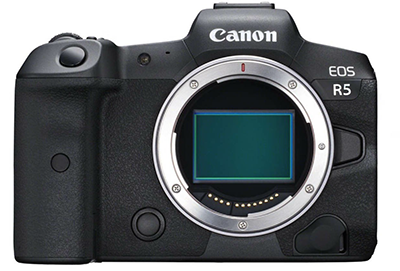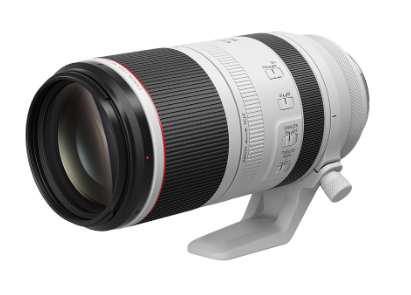Camera Equipment
Camera (July, 2024)
I want to recommend the Canon R7, but I had so many issues during one plus year with it. There were wobbly and unsharp images in series of pictures, grainy low light images and rolling shutter. On occasion it was frustratingly bad in finding focus, even with one-shot spot AF and finally during a couple of intensive weeks abroad it would irregularly shutt down from overheating or something else. That said, I did get some great photos with it. Canon's best R-series APS-C with 32.5 megapixel that paired well with my Canon 100-500mm lens. But when a used and affordable R5 was up for sale, I got rid of the R7 without hesitation. But the R7 will do just fine in many situations. There are several YouTube guides on how to make it perform to the best of its abilities.
Lens
I recommend the Canon EF 100-500mm f/4.5-7.1L IS USM as the best all-round tele-zoom. Its main advantages is the light weight, good for Birds in Flight (BIF) as well as handheld portraits. It has a close focus of only 119cm for insects and flora, and at 100mm wide enough for mammals. The biggest drawback is the cost.
Maybe I will change the recommendation to the Canon RF 200-800mm f/6.3-9 IS USM because of its amazing reach of 800mm which makes it better for pure birdphotography. I haven't tested it, but if I didn't have my 100-500mm (and extender) this would be the first lens to evaluate!
Best budget equipment My experience is mostly with Canon so I would get a used Canon EOS 90D (or Canon EOS 7D Mark II). I would couple it with a used Canon EF 100-400mm f/4.5-5.6L IS II USM (new ones are still expensive!)
I have used Tamron 150-600mm f/5-6.3 Di VC USD G2 and the Sigma 150-600mm f/5-6.3 DG OS HSM C, but I found them to be too heavy and cumbersome as a walk-around lens and most of all loose too much in sharpness at 550-600mm. It could have been with not stopping down the aperture, AF issues etc. I never found them reliable at the far end. It is difficult to remember this in the field so I sold them and stuck with the Canon 100-400mm zoom for a while instead. Note that you can add an Extender (1.4x) to the Canon Zoom, but I never got any good results with that combo (using APS-C cameras)! It is usually better to use it as is and make use of the extra megapixels when you are cropping the images instead.
Best Lightweight setup
For beginners, those who want the cheapest new setup or those who want the lightest possible lens+camera combo can look at getting Canon R7 with the ultralight Canon RF 100-400mm F5.6-8 IS USM.
If you find it to be too short, then I would also suggest the lightweight and affordable Canon RF 800mm f/11 DO IS STM for those small and far away birds. Note however that this lens has a real bad aperture and close focus distance.
Olympus OM-D E-M1 Mark III + M.ZUIKO DIGITAL ED 300mm F4 IS PRO might be the best deal for the more demanding birdphotographer with a fixed aperture of F/4.0. But note that the depth of field doesn't equal F/4.0 of a full-format camera like the Canon R5. Some people say it is more like the bokeh of a F/8.0. But the camera and setup is very small and the second most lightweight combo.
Sony
Sony FE 200-600 F5.6-6.3 G OSS has the best quality and reach for the price, renders the best sharpness at 600mm (see above on Sigma/Tamron 150-600mm). I had it for a while together with the Sony a6600 (2625g incl. camera). The ultimate Sony camera with this lens is the very expensive Sony A1 as it has birds-eye autofocus. I find the Sony a6600 to be too small for this hefty lens. It becomes a bit cumbersome handheld. A good alternative would be a used A9/A7series but then the price goes drastically up.Note that this lens is not handholdable for longer periods of time, I used it mostly on a tripod/monopod. I finally sold this lens to get the Canon 100-500. It was mainly for the lighter weight, but also because I wanted better close focus for flowers and insects as well as the wider 100mm for mammals. I also wanted an affordable camera (Canon R7) with birds-eye autofocus, which my a6600 didn't have.
If you want to save some money on the lens and want better close focus of only 60cm then the Tamron 150-500mm f/5-6.7 Di III VXD G2 will be a great choice.
Nikon
Their best new mirrorless is the Nikon Z9 and the Z8. I would use it with the compact and light weight NIKKOR Z 600mm f/6.3 VR S or the heavier Nikon Z 180-600mm VR. Both are new for 2023. In the past the Nikon D500 + 300mm was a very popular combo and could be a great budget option if you can get hold of a used kit.Fujifilm
A strong contender to the Sony setup might just be the new (for 2022) Fujinon XF150-600mm F5.6-8 R LM OIS WR coupled with the Fujifilm X-T5 or X-H2 with 40mp sensors! They have a crop factor of 1.5x making the effective reach 900mm. I had previously the Sony 200-600 zoom as the "Best quality and reach for the price". But especially as the Fujinon is much more lightweight than the Sony lens, with a camera+lens total weight of only 2260g, this is possibly the new leader in this category of internal tele-zooms. I will however stick to my Canon 100-500 for now as I value the close focus of only 1194mm compared to the Sony and Fujinon lenses of 2800mm and 2400mm respectively.OM SYSTEM (formerly Olympus)
Many switched to Olympus for the quality, light weight and portability with comparably small lenses and cameras. Those who got tired of lugging large lenses or needed the most compact form factor often went for the very good Olympus OM-D E-M1 Mark III + M.ZUIKO DIGITAL ED 300mm F4 IS PRO at only 1850g together. With the Micro Four Thirds-camera sensor this lens becomes a 600mmm in a 35mm equivalent (similar to the Canon 100-400mm). Note however that OM-system cameras have a much smaller sensor which brings higher levels of noise as well as having less bokeh of comparable lenses. Their latest high-end camera is the Olympus OM-1 and the ultimate bird lens is their M.Zuiko 150-400mm F4.5 TC1.25x IS PRO These two lenses has great image quality with a fixed aperture, but relatively expensive, especially the zoom lens.
The ultimate setup
To get the sharpest images with the most pleasing background blur then nothing beats a prime lens (one focal length) with a big aperture. If money and weight are of no concern, and you are a Canon shooter, then I would get the Canon RF 600mm f/4.0 IS USM and Canon RF 100-500mm F4.5-7.1 L IS USM for when the 600mm isn't practical.If filming or low light photography are the main purposes for the camera then I would get the expensive Canon R5 I would also get the Canon R7 for the zoom lens as the go-to walk-around combo untill Canon replaces it with something better (that fixes the bad AF tracking and has faster image read-out to avoid the wobbly images).
Workflow & image editing
The first thing is to learn your camera, set it up properly and to your liking. Often we simply use company presets, but soon you realize that you want to shoot RAW in order to edit your files, and maybe adjust the autofocus, metering etc. I suggest watching the instructions on YouTube
When the camera is setup you need to work on your composition and find your style of photography. There are plenty of books, online tutorials, videos etc. I like like this old generic Guidelines for Better Photographic Composition from the early Internet website period, don't be alarmed ;-)...It applies not only to humans and architecture, but to all subjects.
Next is to find a workflow that works for you. Pictures often need improvements before you share or print them, such as sharpening, noise reduction, color, contrast, or light adjustments. You want to minimize the time spent doing this and then make sure you store them in a safe, smart way. There are many good tutorials out there. Begin by going to Glenn Bartley and his Post Processing Simplified. Do check out his YouTube: Bird Photography Show and I especially like his friends channel YouTube: Jan Wegener and he has his own Editing techniques. I also recommend looking into Jess Findlay's Post-Processing eBook
My Workflow
- Review images on the camera; Rate & Delete
- Download images to the laptop or a fast external SSD/HDD
- Review images on the computer; Rate & Delete using Adobe Lightroom Classic, Adobe Bridge, Breezebrowser, XnView MP etc.
- Edit in Adobe Photoshop CC;
- open i Adobe Camera Raw (version 15.3) and remove noise with AI-powered Denoise.
- crop & resize to 1500px wide and about 200kb large
- adjust white balance & exposure if needed
- selectively modify background and object; Sharpening/noise reduction with Topaz Sharpen AI
- Save & organize images according to date + description on a duplicate set of LaCie d2 10TB

